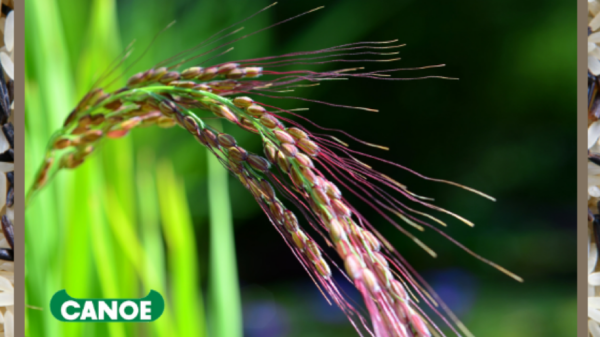
It’s wild rice harvesting season here in Minnesota, and that means the freshest, heartiest, most delicious grains of rice are about to land in your soup bowls and favorite fall recipes.
In honor of harvesting season, let’s take a trip down harvesting lane—starting from the beginning.
A Brief History of Wild Rice
Wild rice has been found in the Upper Midwest and Canada for a long time. For early North American people such as the Chippewa and Sioux Indians, wild rice was a staple grain. Wild rice served as an important cultural and spiritual force and was often seen as a gift from the Creator.
More than 1,200 lakes and rivers in 54 counties contain wild rice, with concentrations of rice being the highest in Aitkin, Cass, Crow Wing, Itasca and St. Louis counties.
From its initial collection to today’s modern harvesting in Minnesota waters, certain traditional and protected wild rice varieties are harvested by hand, using non-motorized canoes with the canoe-and-flail method to help preserve the tradition of this integral grain. Only licensed professionals are allowed to harvest, and they do so with only a pole and two rice beater sticks as tools.
Hand-harvesting is seen as a nod to tradition, but it also helps to ensure the quality of each harvest. Only mature and ripe kernels are collected, while immature kernels fall back into the water to prepare for the following year’s crop.
Harvesting with a Modern Twist
Commercial practices for harvesting wild rice across Minnesota, California, and Canada vary. They can also produce wild rice that looks and tastes significantly different from one another.
Changes that significantly alter the harvest and production of wild rice include the concept of growing wild rice as a field crop in the late 19th century, mechanical harvesting of wild rice on private lands in the early 20th century, and the development of more shatter-resistant strains of wild rice in the second half of the 20th century.
The first step in a successful harvest is finding a good stand of wild rice. The only way to know if a stand will be productive or not is to roll up your pants, get your feet wet, and get in the water.
When it’s ripe, wild rice is firm and falls off the plant easily. Come too early, and it’ll be green. Too late, and it’ll have already fallen into the water.
Whether the wild rice in your bowls and on your plates this season is harvested by traditional methods or newer commercial practices, we know it’ll make your taste buds dance. For more information on wild rice and the history of Canoe Wild Rice, visit our About Us page.
